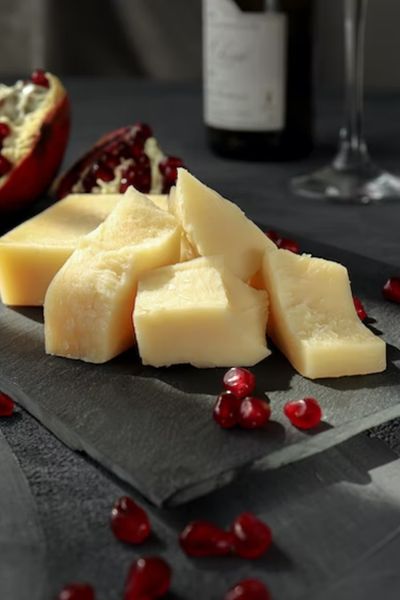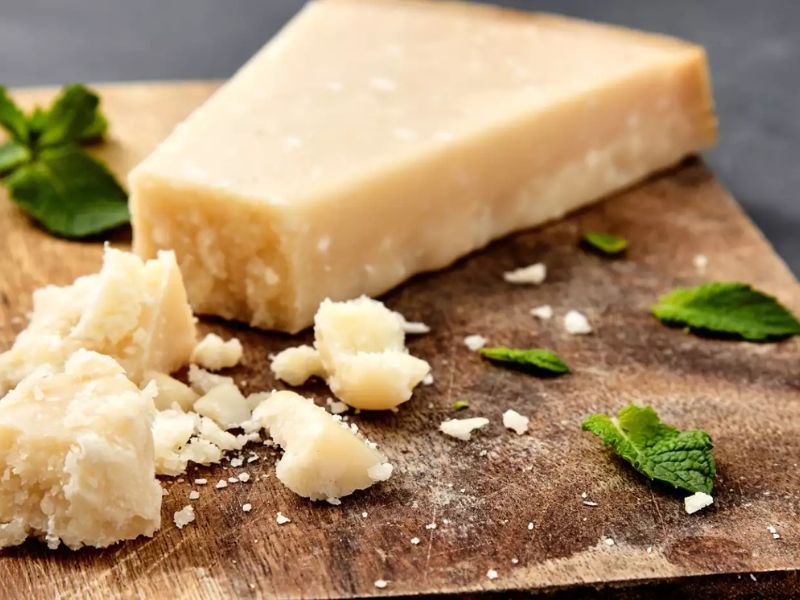When it comes to food waste, it’s important to find ways to use all parts of the food we buy. One part of food that is often thrown away is the rind of parmesan cheese. However, you might be surprised to learn that the parmesan rind is actually edible and has a variety of uses in cooking.
What Is Parmesan Rind?
Parmesan rind is the hard outer layer that surrounds a block of Parmesan cheese. It’s often discarded or used for flavoring soups and stews, but it can also be eaten. The rind is tough and chewy, with a slightly nutty and salty taste. It’s important to note that not all Parmesan rinds are created equal – some are too tough and fibrous to be enjoyable, while others are more tender and flavorful.

When using Parmesan rind in cooking, it’s best to choose a relatively fresh rind with a good amount of cheese still attached. Additionally, any wax or plastic wrapping should be removed before using the rind.
Can You Eat Parmesan Rind?
The short answer is yes, you can eat parmesan rind. In fact, many people enjoy eating the rind because it has a unique texture and flavor. The rind is tough and chewy, with a slightly nutty and salty taste. Some people even consider it a delicacy!
But before you start gnawing on a hunk of parmesan rind, it’s important to consider a few things. First, not all parmesan rinds are created equal. Some are too tough and fibrous to be enjoyable, while others are more tender and flavorful.
Additionally, some people may be put off by the idea of eating cheese rind. If you’re one of those people, don’t worry! There are plenty of other ways to use parmesan rind in cooking without actually eating it.
3 Ways to Use a Parmesan Rind
Here are three ways to use parmesan rind in cooking:
1. Broth or Stock
One of the most popular uses for parmesan rind is to make broth or stock. The rind adds a rich, savory flavor to the broth, making it perfect for soups and stews.
To make parmesan broth, simply add the rind to a pot of water along with any other vegetables or herbs you like. Bring the mixture to a boil, then reduce the heat and let it simmer for several hours. Strain out the solids and use the broth as you would any other broth or stock.
It’s important to note that not all parmesan rinds are created equal when it comes to making broth. The best rinds are the ones that are relatively fresh and have a good amount of cheese still attached. Avoid rinds that are too old or dry, as they may not add much flavor to the broth.
Also, be sure to remove any wax or plastic wrapping from the rind before using it in broth.
2. Flavoring for Soups and Stews
In addition to using parmesan rind to make broth, you can also use it to add flavor to soups and stews.
One way to do this is to simply add a piece of parmesan rind to your soup or stew as it simmers. The rind will slowly release its flavor into the broth, giving it a rich, cheesy taste.
Another way to use parmesan rind in soups and stews is to grate it and stir it into the mixture. This works especially well for creamy soups and stews, as the grated rind will melt and blend in with the other ingredients.
Some great soup and stew recipes that use parmesan rind include minestrone, Italian wedding soup, and tomato soup.
3. Grated for Cooking
Finally, you can also grate parmesan rind and use it in cooking. Grated parmesan rind can be added to pasta dishes, roasted vegetables, and even pizza for an extra burst of flavor.
To grate parmesan rind, simply use a fine grater or a microplane. The grated rind can be stored in an airtight container in the refrigerator for several weeks.
Some delicious recipes that use grated parmesan rind include spaghetti carbonara, roasted Brussels sprouts with parmesan, and white bean and kale soup.
Conclusion
As you can see, there are plenty of ways to use parmesan rind in cooking. Whether you’re making broth, adding flavor to soups and stews, or grating it for cooking, the rind can add a rich, savory taste to your dishes.
So the next time you buy a block of parmesan cheese, don’t throw away the rind! Instead, try one of these three methods for using it in your cooking.
By reducing food waste and finding new uses for all parts of our food, we can help create a more sustainable food system for future generations.
